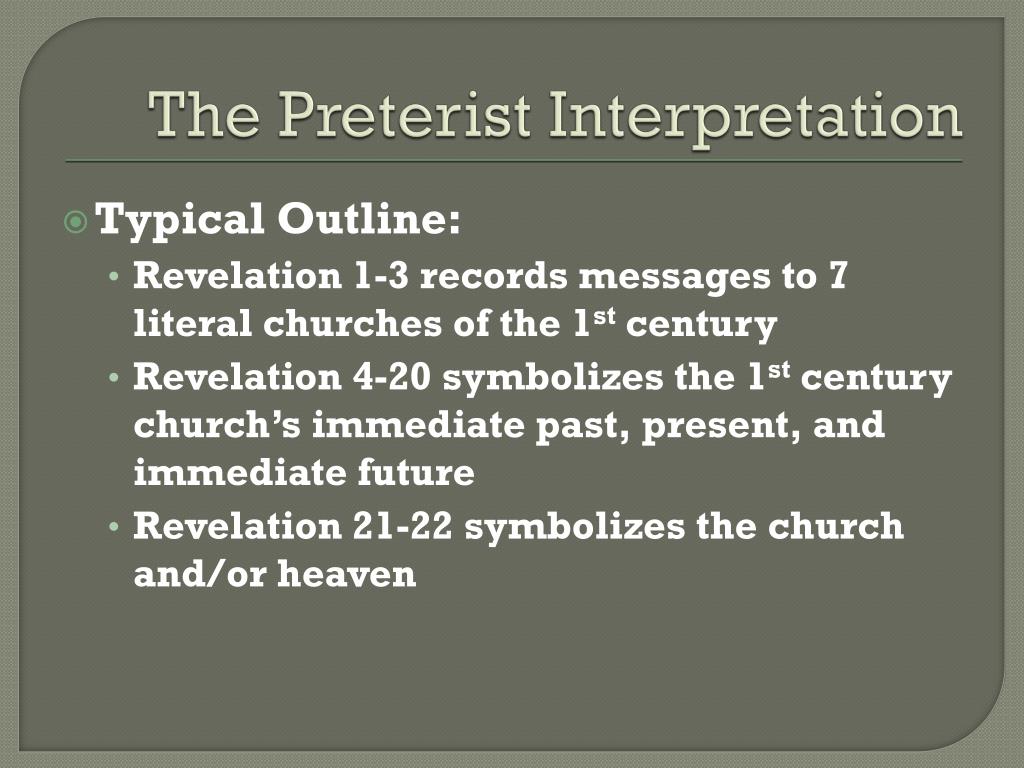

According to Gentry, Revelation is written in the A.D. The judgment on the Jews, according to Gentry, is the fall of Jerusalem. The preaching of the Apostles connected the crucifixion of Jesus with the Jews, see Acts 4:10, 2:22-23, 5:30 10:39. In these passages the Jews ask for Jesus to be crucified and accept the blame for his death.

Gentry cites Matthew 27:22, 25 and John 19:1-6 as evidence the Jews are under God’s judgment for the sin of killing Jesus.

Murray, Millennial Studies (Grand Rapids: Baker Book House, 1948), 107-130). This is one of Ken Gentry’s main points in Four Views, but he does not represent all preterists here. A preterist like Ken Gentry cannot understand why a literalist (like Thomas) chooses to take the plain meaning of the text “soon” and “allegorize” it into a meaning of 2000 years in the future.Īccording to some preterists, the main theme of Revelation is God’s judgement on the Jews who crucified Christ. The Greek word in 1:1 τάχος means “a very brief period of time, with focus on speed of an activity or event, speed, quickness, swiftness, haste” (BDAG). Soon cannot mean some 2000 years in John’s future. The meaning of the book is to be found in its rather bold use of symbolism to describe the fall of Jerusalem, not modern-era warfare, etc.Ī major point in favor of preterism is that Revelation claims to be describing what will happen soon (1:1-3). For preterists, literalism will only confuse the meaning of the book. Preterists argue that Revelation is a highly figurative book which cannot be approached with a straightforward, simple, literalism. For example, he notes that if the year-to-day principle were applied to Daniel 4:32, then Nebuchadnezzar ate grass for 2520 years! Stuart is willing to accept the year-to-day interpretation in Ezekiel 4 and even Daniel 9, but argues that these two passages do not require every day mentioned in prophecy to be a year. Stuart blames Joseph Mede for universal application of the year-to-day theory in prophetic studies and popularizing the 1260 year reign of papal-antichrist. One of the earliest representatives of this view among Protestants was Moses Stuart ( Commentary on the Apocalypse ). Preterism has become the standard solution for reading Revelation among a- or post-millennialists. Essentially, Preterism argues the Book of Revelation was written to describe the events of the first century and there was little if anything that referred to the history of the church beyond that period. There is no real prediction of future events. As one of the two reactions to the long-hallowed historicism position, preterism reads the book of Revelation as referring entirely to the events of the first century.


 0 kommentar(er)
0 kommentar(er)
